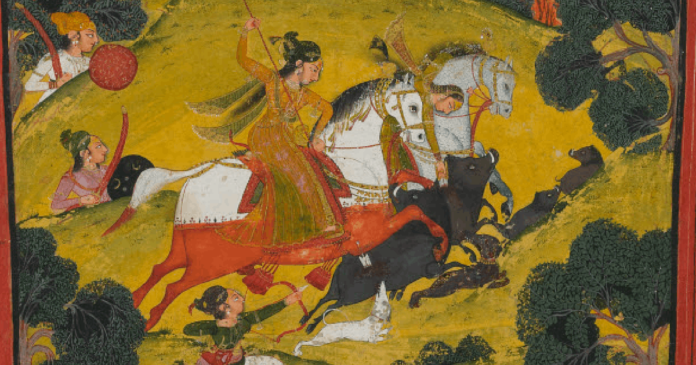Rajasthani miniature painting is a beautiful and intricate art form with its origins in the Indian state of Rajasthan. Characterized by its intricate detailing, bright colors, and exquisite compositions, the art form has a rich history and has been practised in the region for over 400 years.
Rajasthani miniature paintings were created in the royal courts of Rajasthan and were used to illustrate manuscripts, decorate palaces and havelis, and to record important historical events. The paintings were also commissioned as a way of showcasing the wealth and power of the Rajput rulers who patronized the art form.
The paintings are made on a variety of surfaces, including paper, silk, and ivory. They are characterized by their intricate and detailed work, which includes fine lines, delicate brushstrokes, and intricate designs. The paintings are typically small in size, with the smallest being only a few inches in length.
Rajasthani miniature paintings features
One of the most remarkable features of Rajasthani miniature paintings is their use of bold, bright colors. The artists used natural pigments made from minerals, plants, and insects, which they mixed with gum Arabic to create a paint that is then applied to the surface of the painting. The use of natural pigments not only gives the paintings their distinctive colors but also ensures their longevity.
Rajasthani miniature paintings theme
The paintings depict a variety of themes, including mythological stories, religious events, court scenes, and everyday life. They often depict scenes from Indian epics such as the Ramayana and the Mahabharata. The paintings are also known for their portrayal of the natural world, including animals, plants, and landscapes.
Rajasthani miniature painting styles
There are several distinct styles of Rajasthani miniature painting, each with its unique features. Some of the prominent styles are Mewar, Marwar, Bundi, Kota, Bikaner, and Jaipur. These styles are characterized by their distinct color palettes, compositions, and themes. For example, the Mewar style is known for its use of muted colors, while the Marwar style is characterized by its vibrant colors.
In recent years, there has been a resurgence of interest in Rajasthani miniature painting, both within India and internationally. The art form has been recognized as an important part of India’s cultural heritage and has been the subject of numerous exhibitions and academic studies.
In conclusion, Rajasthani miniature painting is a beautiful and intricate art form that has survived for centuries. It is a testament to the creativity and skill of the Rajput artists who developed this unique style. Today, these paintings are highly valued and sought after by art collectors and enthusiasts around the world.


